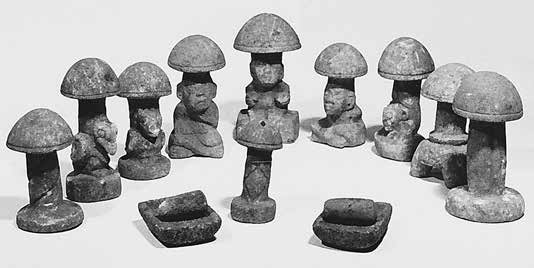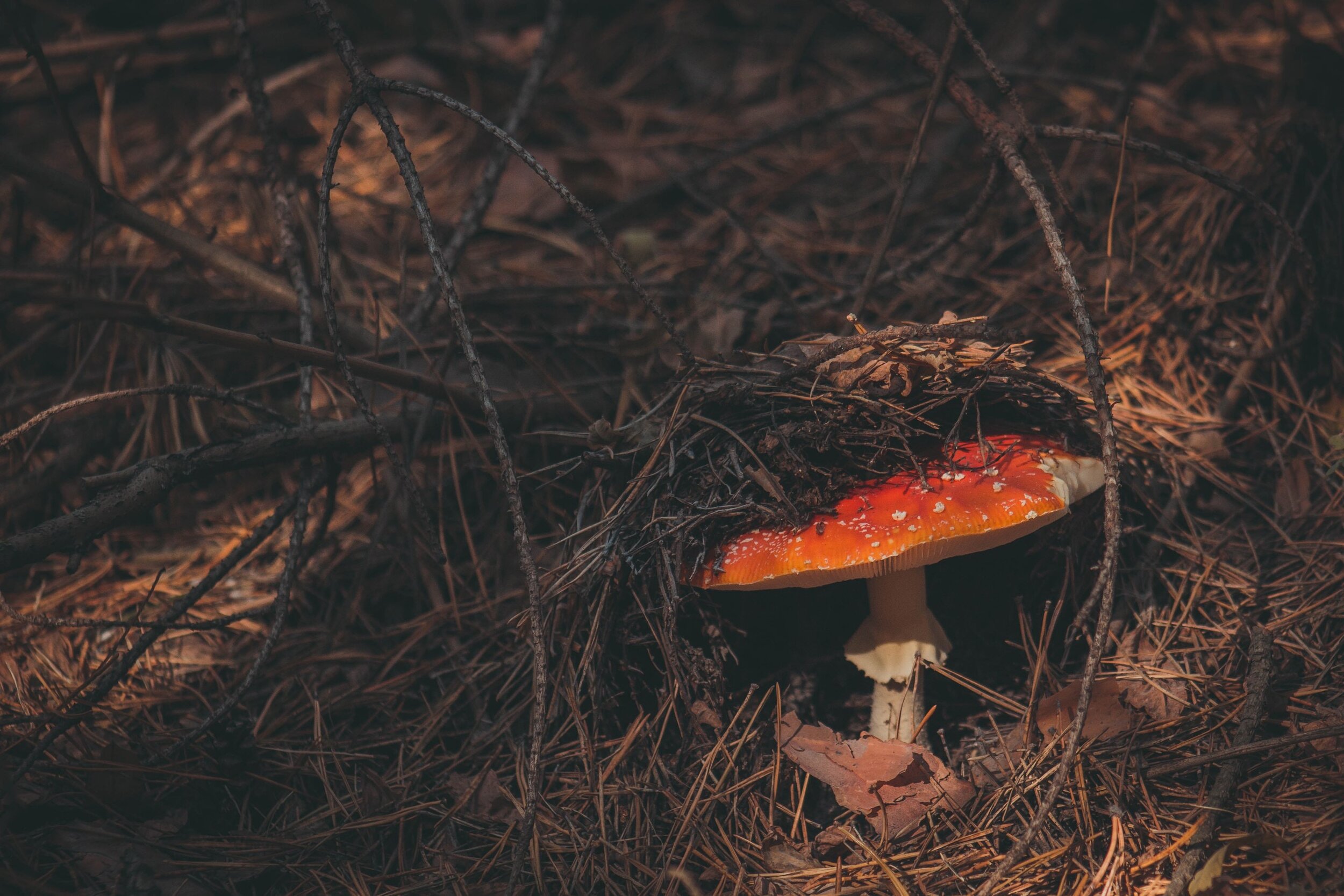The History of Mushrooms: Ethnomycology [Part 2]
In school we learnt a lot about animals, a small sprinkle of plants and a bizarre amount about the Cold War. But what about fungi? The Fungi Kingdom exists literally everywhere on this planet: on land, in water, in the air, and on plants and animals and humans too. They vary in size from being microscopically tiny to the largest organisms on Earth, reaching several kilometres. And they have been around for a long, long time. There is fossil evidence of two mushroom remains that date back to 90 - 94 million years ago.
K. Back up. The mushrooms you see in your backyard or in the forest are basically identical to those a dinosaur would have seen in their forest!
They truly embody the concept of “if it ain’t broke, don’t fix it, mate!”.
Despite living on planet earth for a significantly large amount of time, we only know a tiny fraction on the history of mushrooms. The interwoven stories of fungi and humans are ancient and endlessly fascinating. For as long as we have lived, we have lived beside the fungi.
“Ethnomycology” is the study of the historical uses and sociological impact of fungi The term also includes the study of how fungi are used for medicine (medicinal mushrooms), food, the sociological influences (myth, shamanic and spirituality) and in the context of the study of psychoactive mushrooms.
Mushrooms in the Archaeological Record
Let’s take a quick road down memory lane to see where our friendly shroom alliances have graced us with their presence.
Tassili n'Ajjer
A national park (UNESCO's World Heritage Site) in the Sahara desert, located in Algeria, not only has some of the most important groupings of prehistoric cave art in the world, but several artwork depicting mushrooms and mushroom-covered humanoids. These are the oldest artistic representations of mushrooms that we know of and date back between 7,000 – 9,000 years ago.
Ötzi the Iceman
The well-preserved body of a man was found in the Ötztal Alps, on the border of Italy and Austria, in 1991. He is Europe’s oldest known human mummy, having lived 5,000 - 5,400 years ago. Among his possessions were two different species of mushrooms, one that was known to be anti-parasitic and the other used to help make fire. Smart man. You check out his Insta profile here ;)
Mushroom Stones
Hundreds of carved stones from the Mayan culture of Central America feature human and animal figures, like jaguars, with mushroom caps growing out of their heads. These stones are over 2500 years old. I went down a rabbit hole upon finding this article that is all about mushroom stones from the Guatemala Highlands and beyond. You’re welcome.
These stones suggest Mycolatry, the term used to describe the study of Mushroom Worship. Where do I sign up?
Chinese Medicine
Mushrooms have been used in traditional Chinese medicine (TCM) for centuries, used in both herbal medicine and nutritional applications, for the purposes of well-being and longevity. The Chinese recognize six basic types of medicinal mushrooms, according to colour: white, red, purple, black, blue, and green. These colours correspond to different parts of the body and resonate with various diseases. For example, red is for the heart, black is tor the kidneys, and green is for the liver and gallbladder.
Lingzhi mushroom (aka reishi), helps fight inflammation, strengthen immunity, improve cognition and keeps blood flowing.
Today, mushrooms are indeed having their (magic) moment. Mushroom teas, elixirs, superfood powders, chocolates and coffee have all quickly sprouted up in the health aisles. There’s an annual mushroom-dedicated festival in Telluride, Colorado that celebrates the latest in psychedelic, culinary, and medicinal mycology. Take a look at what they get up to. Trust me, the pictures are so worth it! Denver, a six hour drive from Telluride has become the first city in America to decriminalize psilocybin mushrooms. Johns Hopkins Medicine announced its new Center for Psychedelic and Consciousness Research, which will study compounds like LSD and psilocybin for a range of mental health problems, including anorexia, addiction and depression. A group of private donors has given $17 million to kick start the center, making it what is believed to be the largest research center of its kind in the world.
So what does this mean for us today? Well over and above all of this being super duper fascinating (if you got this far, you’re certainly interested), it’s clear that mushrooms have been around since the good ‘ol days and have played a monumental role from skyrocketing cultures into higher states of consciousness to keeping us grounded and healthy against parasites and warm with fire.
It seems then that without mushrooms, we wouldn’t be here.
If you didn’t catch my introductory article on Healing with Medicinal Mushrooms, head here.
Special thanks to Harmonic Mycology for the continuous inspiration and assistance!
References:
Photo by Tania Alieksanenko on Unsplash
http://www.davidmoore.org.uk/Sec01_01.htm
https://www.mushroomstone.com/mycolatry101.htm
http://www.dl.begellhouse.com/journals/708ae68d64b17c52,0d0f121956dd501b,185479042f290e6d.html
https://hub.jhu.edu/2019/09/04/hopkins-launches-psychedelic-center/
Mycelium is Medicine zine, Harmonic Mycology




